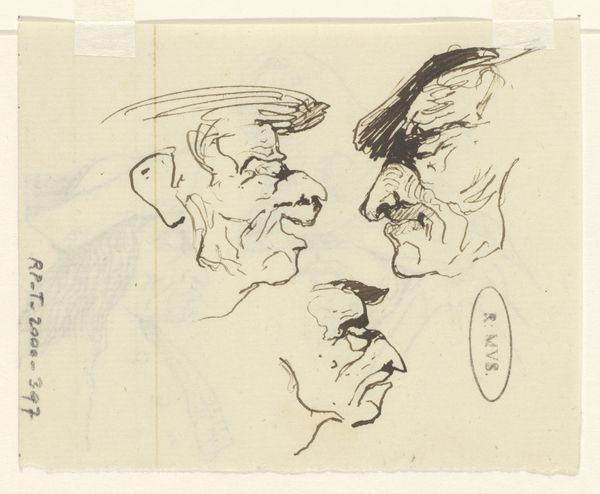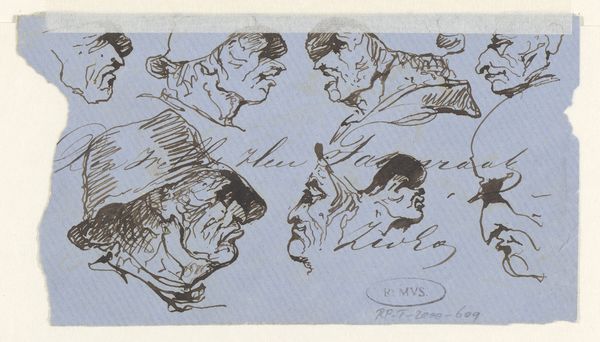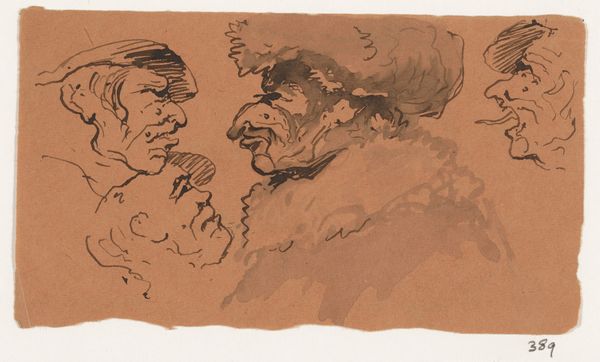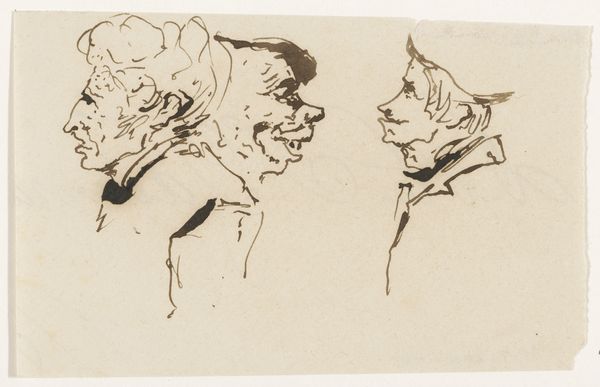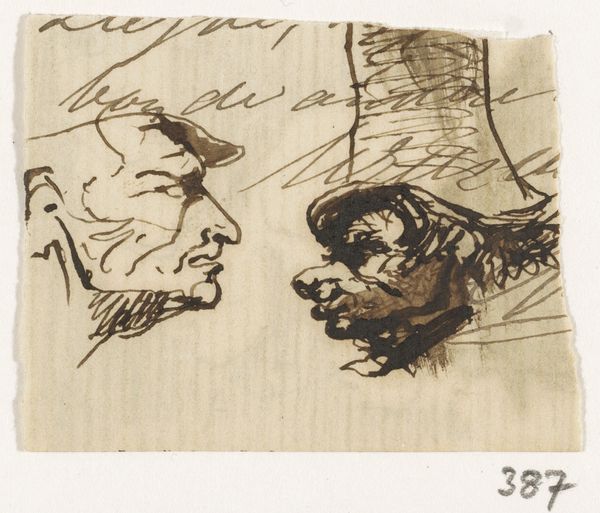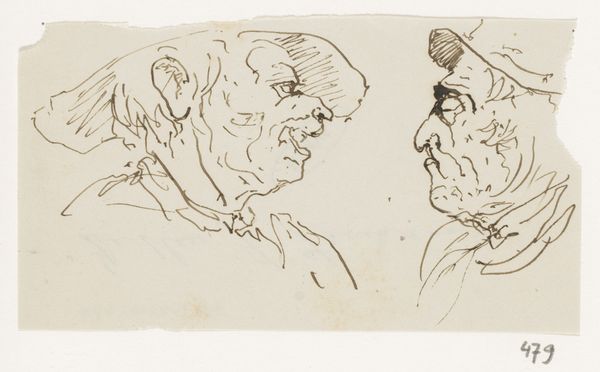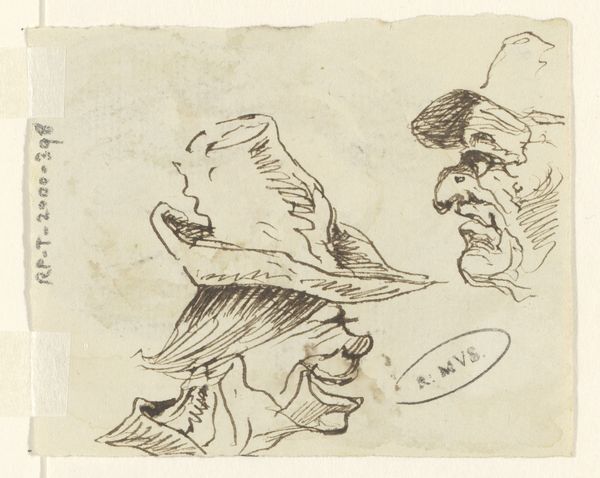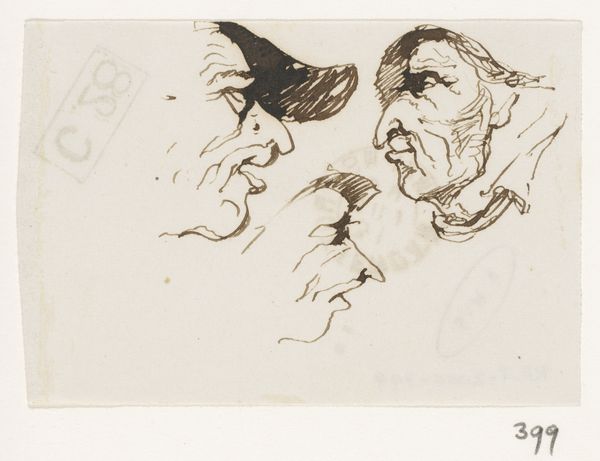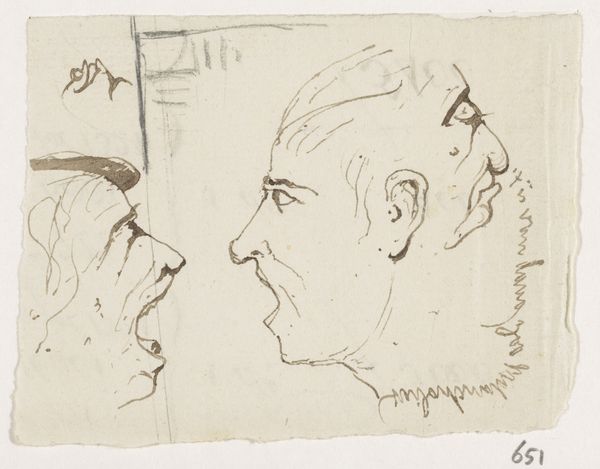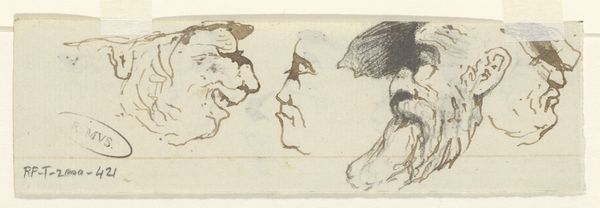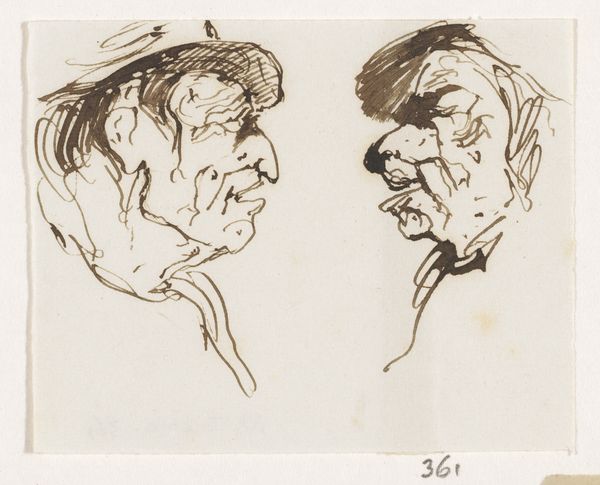
drawing, paper, ink, pen
#
portrait
#
drawing
#
imaginative character sketch
#
ink drawing
#
pen sketch
#
figuration
#
paper
#
personal sketchbook
#
ink
#
ink drawing experimentation
#
pen-ink sketch
#
sketchbook drawing
#
pen
#
genre-painting
#
storyboard and sketchbook work
#
sketchbook art
#
fantasy sketch
#
realism
Dimensions: height 40 mm, width 135 mm
Copyright: Rijks Museum: Open Domain
Curator: We are looking at “Rijtje koppen,” which translates to "Row of Heads," a drawing attributed to Johannes Tavenraat, likely created between 1840 and 1880. Editor: My immediate impression is the incredible freedom of line. You can practically feel the artist's hand moving quickly across the paper. There’s a real sense of capturing fleeting expressions. The minimal use of materials also emphasizes the pure expression of the concept. Curator: Exactly! And that links to the deeper context. The concentration on physiognomy. The artist seemed interested in capturing inner character through these outward features. The face has always been a site loaded with significance. Here we see almost a catalog of archetypes. Editor: But that's interesting—you call them archetypes, I see them more as exercises in craft. The stark use of ink on paper forces the artist to reckon with their material choices. Was he experimenting with different nibs? The varying line weights suggest a kind of material exploration too. Curator: Perhaps. However, notice the repeated use of profiles. The profile has been a standard convention in portraiture since antiquity to signal status, but here it seems almost democratic. Anonymous men given monumental weight through this classical format. The use of ink itself contributes—it can appear ephemeral, like the quick passing of time and memory itself, or extremely steadfast when used for permanent archival records. Editor: I wonder about that 'ephemeral' quality. Look at the density of line in some sections; it's not light or ethereal. It strikes me that we could also interpret the 'Row of Heads' as social commentary on the industrialized process of portraiture through simple drawings. Consider what labor conditions might be behind production for commercial success. Curator: A valid point. Ultimately, it highlights that any piece can carry many meanings. Editor: Precisely, and whether Tavenraat intended it or not, its materials connect the work directly to broader patterns of resource extraction, use, and potential meaning, that we project onto a work of art.
Comments
No comments
Be the first to comment and join the conversation on the ultimate creative platform.
